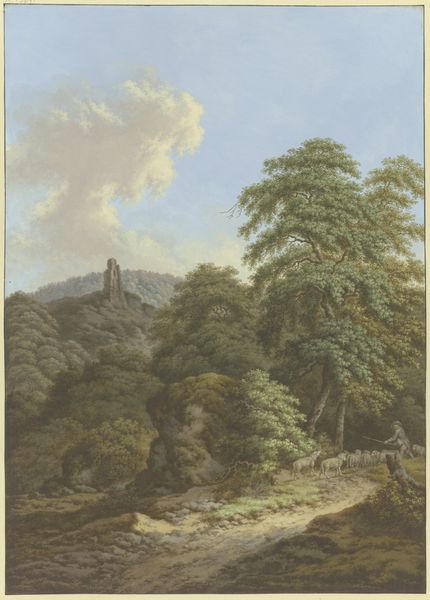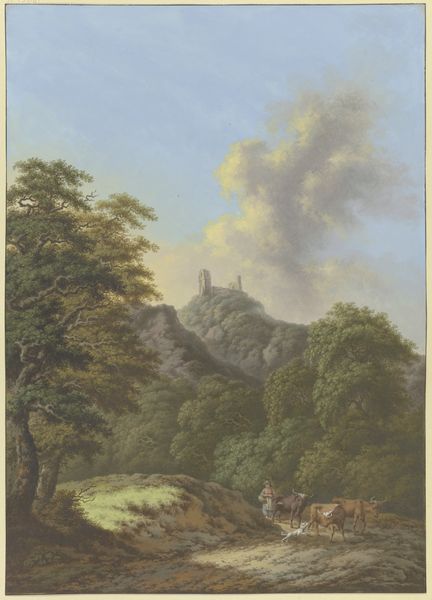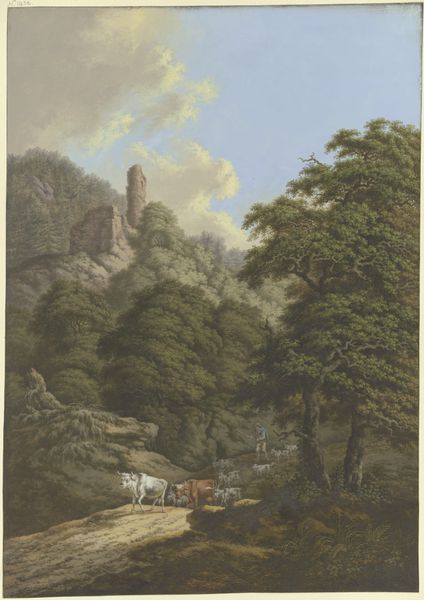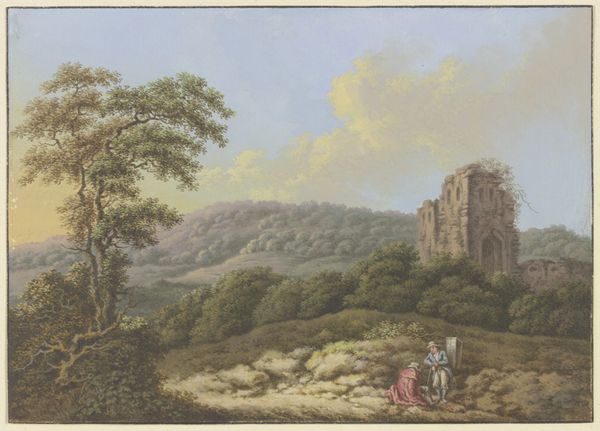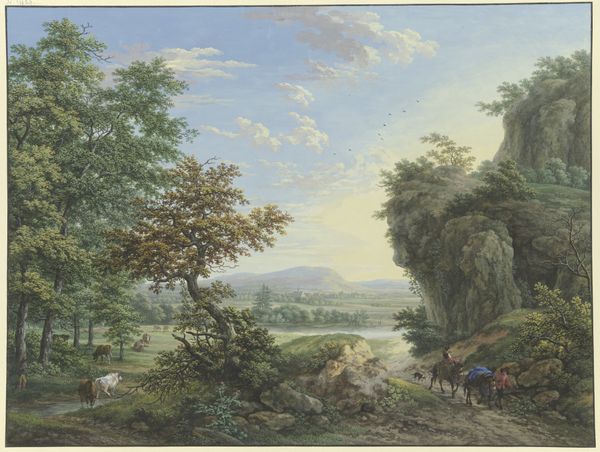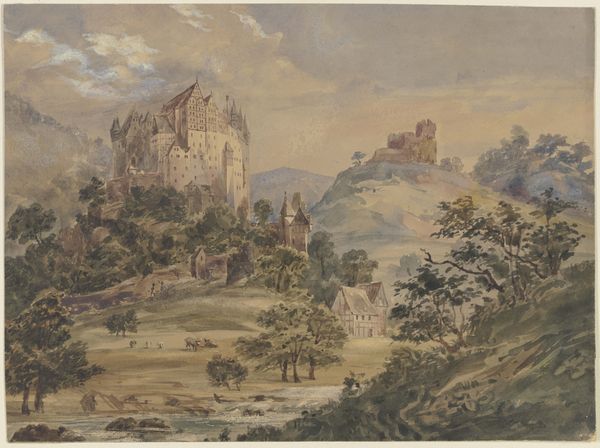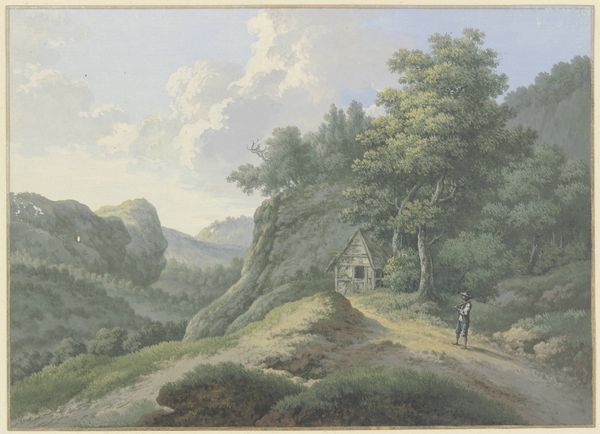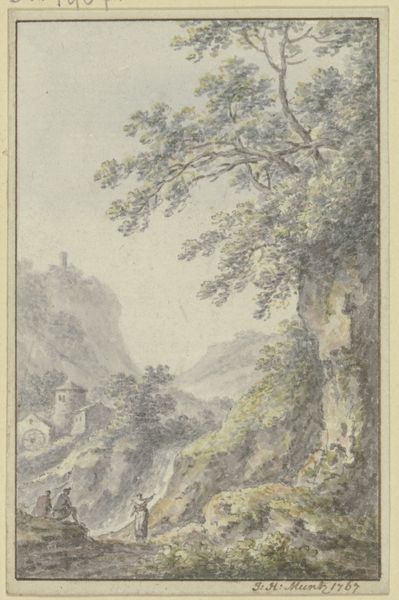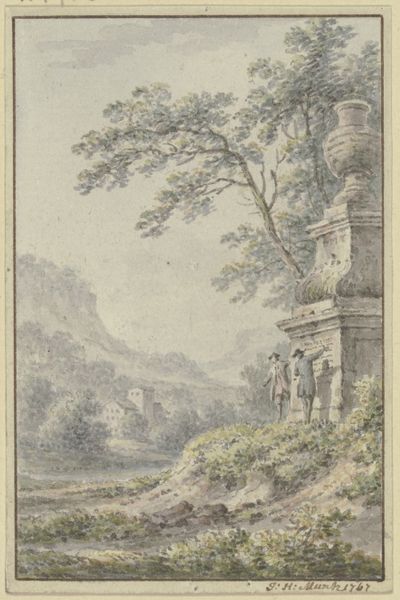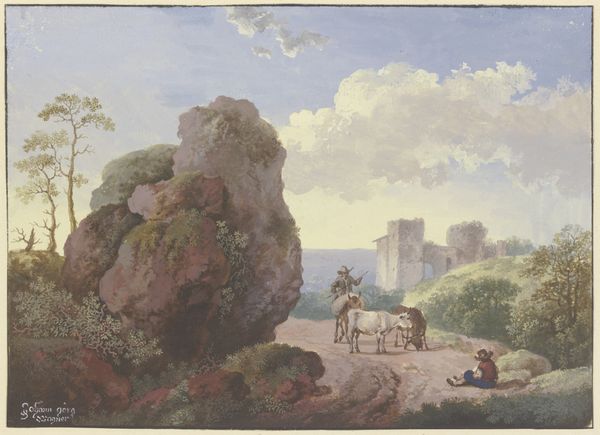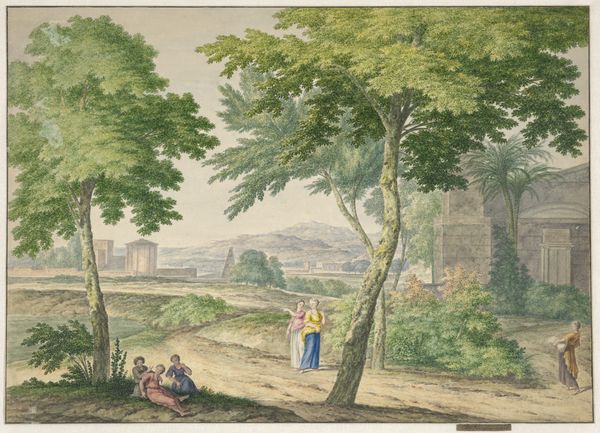
drawing, coloured-pencil, tempera, painting, paper, watercolor
#
drawing
#
coloured-pencil
#
tempera
#
painting
#
landscape
#
paper
#
watercolor
#
coloured pencil
#
classicism
#
romanticism
Copyright: Public Domain
Editor: Here we have "Reiche Berglandschaft mit Bach und Wald" by Karl Franz Kraul. It looks like a tempera and watercolor piece on paper. The overall impression is rather idyllic; it feels like a carefully constructed vision of nature. What strikes you when you look at it? Curator: It’s intriguing how Kraul blends tempera and watercolor, alongside coloured pencils, on paper. Consider the labour involved in layering these disparate materials. Notice, the subject—a romanticized landscape—veils the means of its production. Editor: In what way? Curator: This idyllic scene, with its castle ruins and serene figures, masks the very real human effort to create the pigments, prepare the paper, and execute the drawing. These materials weren't simply available; they were manufactured, traded, and made accessible through specific economic systems. This intersects with a rising merchant class. Editor: So you're suggesting that the beauty is a distraction from the industry behind it? Curator: Exactly. The "naturalness" is constructed through very deliberate material choices and processes tied to broader societal structures. Think about the patronage system during this era – how did that impact Kraul’s access to materials and, in turn, influence the style and subject of his art? Editor: That's really interesting; I hadn’t considered the economics of artmaking in such a direct way. Curator: Precisely. The very act of creation is embedded within a web of production and consumption. Considering this provides a grounded way to consider the art.
Comments
No comments
Be the first to comment and join the conversation on the ultimate creative platform.
